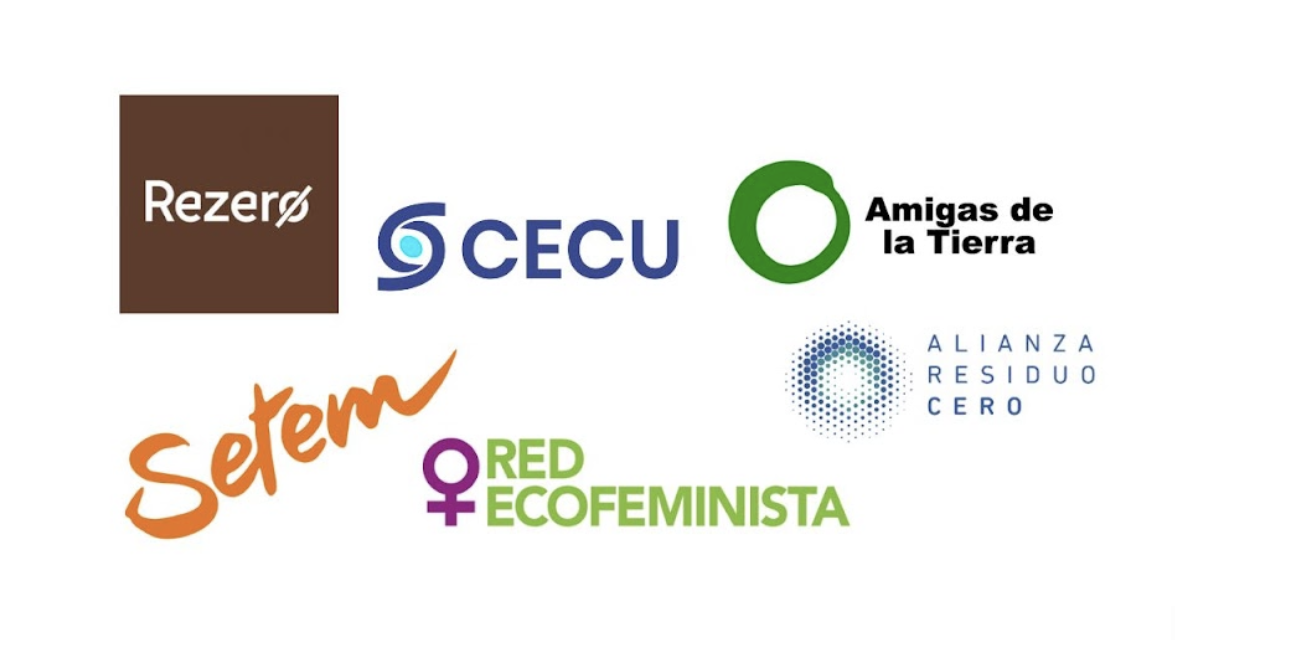World Recycling Day once again puts the spotlight on the third R, while truly circular practices—such as prevention, reuse or repair—are being sidelined.
In an increasingly fragile global context—with unstable supply chains, an energy crisis and raw material shortages—Europe cannot afford to continue with a resource-wasting model.
17 May is World Recycling Day. Each year, public authorities, companies and the media mark this date with campaigns that promote recycling as the solution to environmental problems. But… what exactly are we celebrating?
Single-use + Recycling: The foundations of a pernicious narrative
For decades, industry has promoted disposable packaging, mainly plastic, as a symbol of modern convenience, disguising its economic interests with environmental messaging. We’ve been sold the idea that “it’s fine” as long as it gets recycled—that we can continue consuming excessively as long as we throw the packaging into the right bin.
In addition, for products that are not single-use and are highly dependent on critical minerals—such as electrical and electronic devices—their production has soared since the 1990s, just as these key minerals have increasingly ended up as waste due to the short lifespan of such technologies.
This narrative is no accident: it is a strategy designed to perpetuate an unsustainable production model without real change.
The limits of recycling
We now know that only 9% of plastic produced globally has ever been recycled. At the global level, circularity has declined by 2.2% over the past ten years, meaning that today, only 6.9% of the materials we use come from recycled sources. What’s more, the current collection systems have reached their limit. Most waste ends up in landfills, incinerated or scattered in natural environments, with devastating effects on human health and ecosystems.
And from the fraction of waste that does get recycled, a large portion loses quality and value in the process: recycled material does not have the same properties as virgin material. This applies to all materials that end up being used in lower-value applications. This is known as downcycling, a process that degrades the material over time until it becomes unrecoverable waste. This spiral of devaluation is incompatible with efficient resource management and a truly circular economy, where materials should retain their original function for as long as possible.
Meanwhile, industry continues to produce non-reusable packaging that is increasingly difficult to recycle: composite materials, incompatible mixtures, non-standard formats. A telling example is the plastic-lined paper cup, marketed as “eco-friendly” but impossible to recycle—despite what we’re told. A circular economy cannot exist if packaging is designed to become waste from the outset.
The price of recycling
And who pays for all this? Citizens and public authorities. Industry hides behind recycling in order to continue generating waste without bearing the real cost. Extended Producer Responsibility (EPR), which obliges companies to pay for the waste they generate, is systematically flouted.
Despite being in force for decades, EPR has failed to reverse the growing trend in waste generation. Recycling remains the main focus, while truly circular practices—prevention, reuse and repair—are being rolled back. This highlights a fundamental contradiction: a system that should be promoting circularity is instead entrenching the culture of waste and disposability.
A call to reframe EPR
In an increasingly fragile global context—with unstable supply chains, an energy crisis and raw material shortages—Europe cannot afford to persist with a resource-wasting model. As outlined in the report “Extended Producer Responsibility Aligned with Planetary Boundaries”, EPR must cease being merely a mechanism for funding waste management and become a tool to drive systemic change: efficiency, autonomy and resilience.
This is why more and more voices are calling to reframe EPR with a structural vision based on two pillars:
- Optimise the system: Establish common criteria at European level, ensure stricter oversight, prevent fraud and make compliance easier for producers.
- Activate circularity: Channel resources not only into collection and recycling, but also into prevention, reuse and repair. Fund washing infrastructure for reusable packaging, reuse systems and repair grants.
Unfortunately, only the first pillar is currently being addressed. The second—the one that could truly transform the system—remains absent from political priorities.
6 Measures to Shift the Focus Away from Recycling
This narrow strategy slows the transition towards a zero-waste production and consumption model and keeps alive the illusion that recycling can solve everything. It’s time to break the silence.
Recycling is not the solution: it’s the excuse for limitless production.
We demand bold measures:
- Prioritise reuse over recycling: Enforce existing legislation, allocate public resources to genuinely support reuse (as has been done for decades with recycling and end-of-pipe treatments), and resist the lobbying of the throwaway industry in weakening targets or spreading disinformation campaigns against reuse.
- Implement policies that extend product lifespans, increase durability and use waste strategically—reducing the consumption of raw materials, staying within planetary boundaries and prioritising human and community wellbeing.
- Ban superfluous and non-recyclable packaging.
- Restrict disposable products marketed as more sustainable alternatives (e.g., bioplastics), when in reality they are false solutions.
- Introduce fiscal measures to tax the production, distribution and consumption of disposable products more heavily than their reusable alternatives.
- Restructure and strictly enforce extended producer responsibility.
- Establish a new European governance model for waste.
This 17 May, we do not celebrate recycling. We denounce its failure. And we demand a change of model.
—
This statement is endorsed by the following organisations:
If you’d like this formatted into a document or adapted for a specific purpose (e.g. campaign, press release, web), just let me know!

Maig 2025